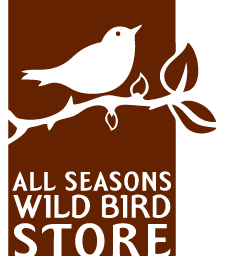 Goldfinches are the latest nesting songbird in Minnesota. Unlike most of our songbirds, they do not feed their young insects or larvae as their diet is strictly vegetarian. As a result, Goldfinches delay nesting until milkweed, thistle and other plants produce seeds in an effort to ensure that there will be plentiful food sources to feed their young. Typically in Minnesota this means nesting begins in late June and July.
Goldfinches are the latest nesting songbird in Minnesota. Unlike most of our songbirds, they do not feed their young insects or larvae as their diet is strictly vegetarian. As a result, Goldfinches delay nesting until milkweed, thistle and other plants produce seeds in an effort to ensure that there will be plentiful food sources to feed their young. Typically in Minnesota this means nesting begins in late June and July.

Goldfinches gather the silk of the Canadian Thistle plant to line their nests and favor the seed of the plant for food. They are also attracted to nesting material like the Best Nest Builder™ which is made of cotton fibers. Watching the adults fill their beaks with the fluffy, white cotton is an added bonus in backyard birding.
Both adult birds work to select a nest site but the female builds the nest. They chose shrubs or saplings in a fairly open area. The nest is built in 2-3 vertical branches that form a fork which is shaded from above but often visible from the ground. The female uses spider silk to secure the foundation of the nest to the branches. It takes her 6 days to build the nest which will be 3” across and 2-4.5” high. The typical clutch is 2-7 eggs and in Minnesota birds have one brood per year. The eggs are pale blueish and sometimes have faint brown spots on the larger end of the egg. The female incubates the eggs for 12-14 days.
Once the young hatch they stay in the nest for 11-17 days. After they fledge, the young will join the adults at seed feeders in the yard. Goldfinches frequent feeders filled with Nyjer®™, golden safflower or sunflower out of the shell.
For more information about songbird nesting, download our Nesting Notes pdf..

